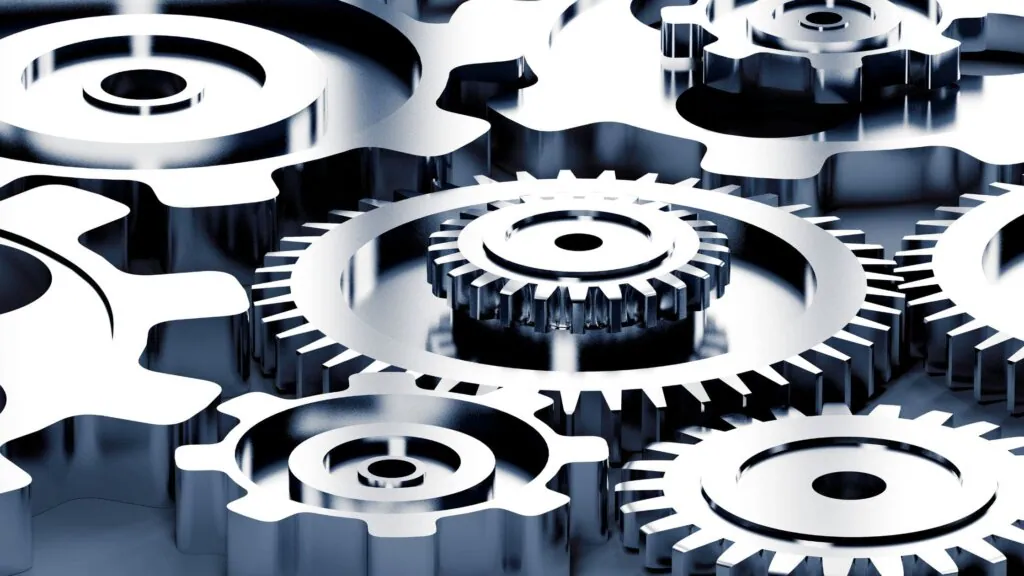
CNC gear manufacturing is the automated & flawless use of computer-controlled machine equipment to produce gears. A vital part of gear and other heavy systems, the gears are in very effectively conveying torque & motion in a variety of industries, from robotics as well as Large scale mechanical equipment to automotive & aerospace.
CNC (Computer Numerical Control) technological advances is unique in that it can manufacture gears with very high precision, precise tolerances, and outstanding quality. High-performance systems, where a tiny variance might impact functioning, require these attributes along with others. The increased scalability of CNC methods allows them to be perfect for both mass production & prototyping, when compared to traditional or manual machining techniques.
Engineers may quickly turn intricate digital gear designs into useful components through the use of modern CNC equipment with CAD (Computer-Aided Design) & CAM (Computer-Aided Manufacturing) software. In besides saving time, this flawless operation guarantees that complex geometries are created with high precision.
As industrial automation technologies, electric vehicles, & green power sources like wind turbines grow, so does the need for improved gear production. The global gear production market is expected to rise at an average annual growth rate (CAGR) of 5.3% from 2021 and 2027, which could lead to a value of USD 191.2 billion, according Markets.
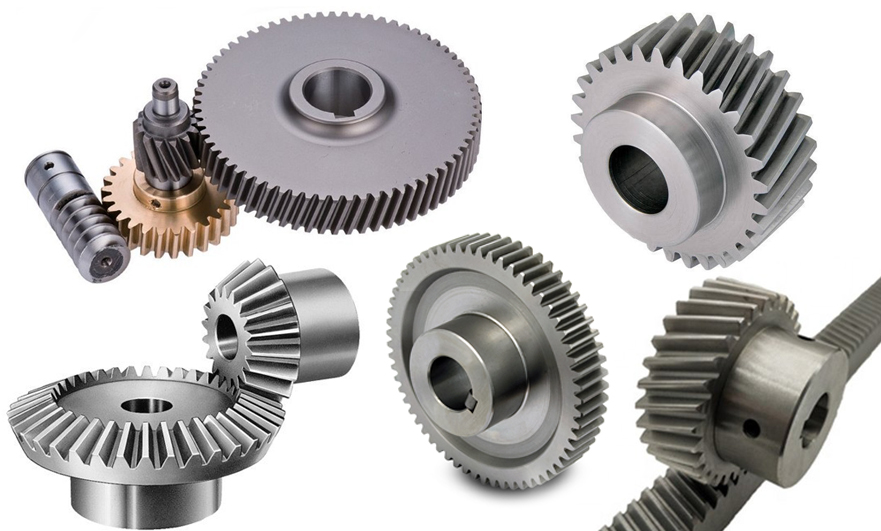
The tooth structure & intended function of these gears determine how they are classified. To ensure mechanical dependability, effective motion transfer, & ideal system efficiency in a variety of usage, selecting the appropriate gear type is key.

Spur gears are among the most prevalent kind of gear and can be identified by their simple design with straight teeth. These are perfect for systems that run at a slower pace while supporting big weights since their teeth line up directly to the gear axis. It’s uses in simple gear trains, conveyor belts, & mechanical clocks when vibrations and noise are not the main issues.
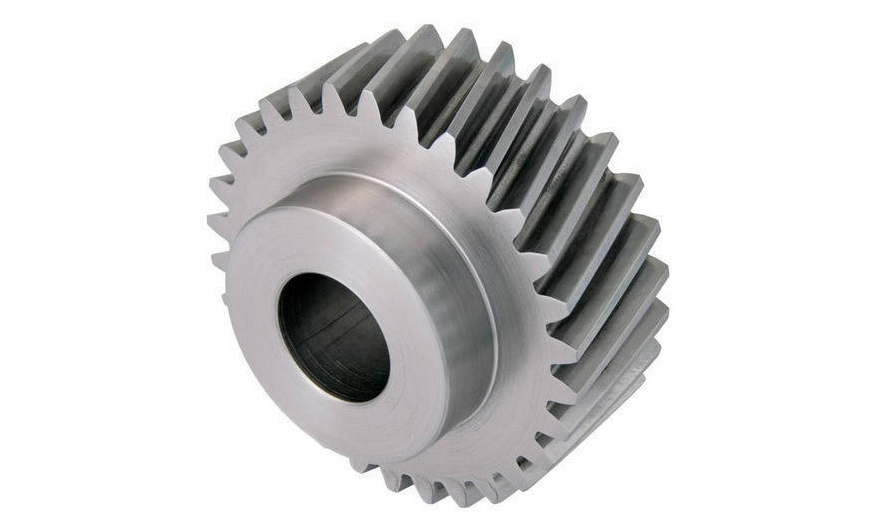
Helical gears consist of angled teeth which engage more slowly than spur gears, which renders them more quiet and efficient. Performance has been enhanced in high speeds & high-load circumstances due to this configuration's reduced noise and more even distribution of load. Helical gears are thus frequently used in sophisticated robotics & automobile transmissions.
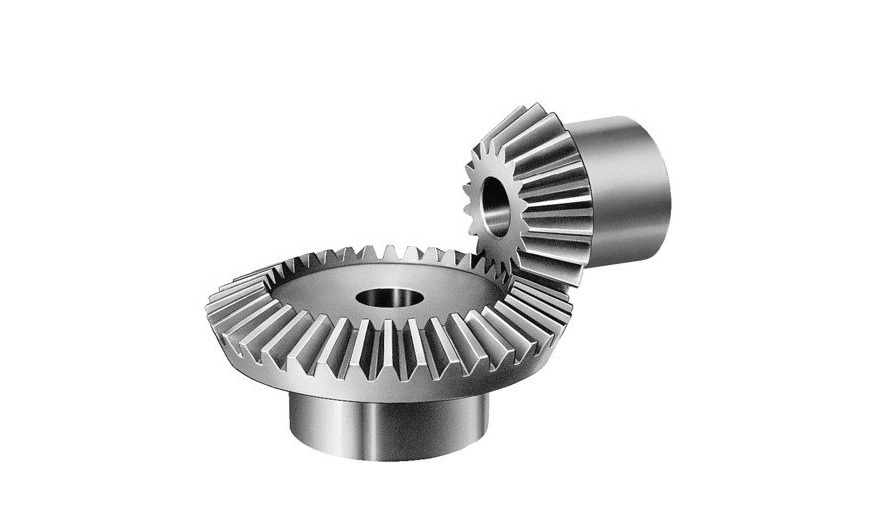
When motion has to be transferred across intersecting shafts, usually at a straight angle, bevel gears are used. They are the most common choice for industrial gearboxes, differential gears, and any other equipment needing angular power transmission because of their cone-like construction.
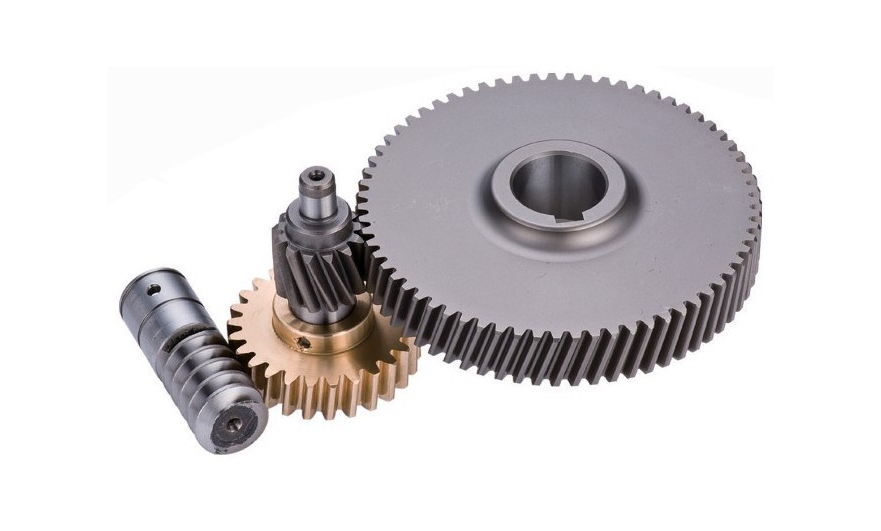
A screw-like worm & a matching gear disc constitute this gear pair. Worm gears are sought after because of their self-locking mechanism, that stops back-driving, additionally, the ability to generate high torque at minimum velocity. They are helpful in hoists, elevators, & heavy-duty lifting systems due to their characteristics.
The gear in the focal point of a cluster of gears, many planet gears, including an encircling ring gear comprise all part of this complex arrangement. As planetary gear systems provide very high torque density in a small package, they are frequently found in machinery that is automated, electric car drive trains, especially manufacturing facilities with space requirements.
A significant consideration that influences overall performance is the material utilized for gear manufacturing. The properties of the material have a significant impact on significant aspects like strength, heat tolerance, wear resistance, & simplicity of machining.
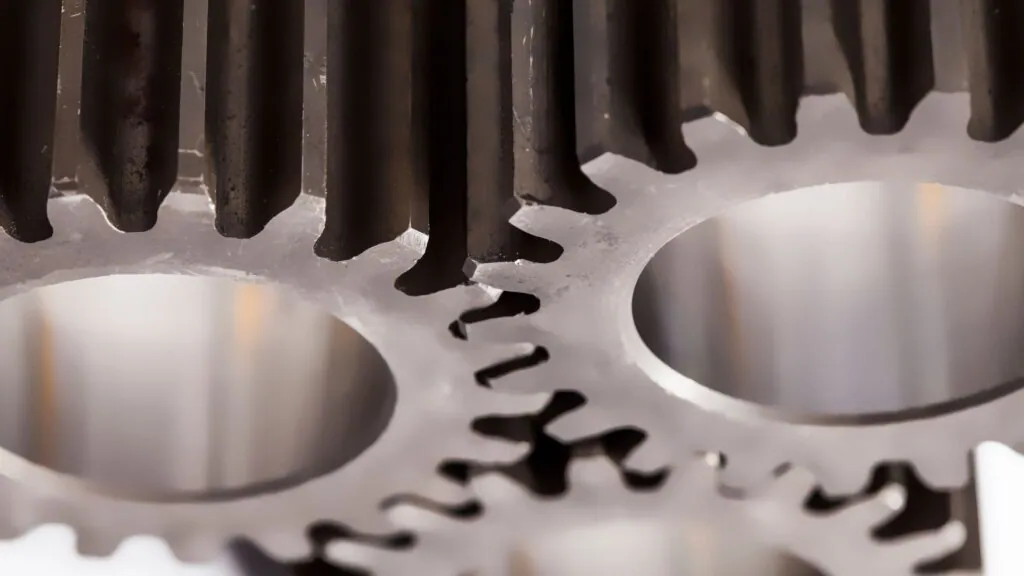
The most common materials utilized in the production of gears is alloy steel. High tensile strength, good harden ability, & exceptional fatigue resistance are all offered by grades such as AISI 4140 and 4340. Because of these features, they're perfect for gears that are used in high-stress situations, like large industrial machinery, aircraft systems, & automobile power trains.
Stainless steel is another option for applications that require chemicals or moisture because of its resistance to corrosion. It often occurs in food processing equipment & marine settings.
Cast iron is prized for its machine ability & vibration-dampening properties. Given these features, it can be used in commercial gearboxes along with industrial systems wherever ease of manufacture & noise reduction are important.
Worm gears are typically produced using these non-ferrous metals. Primarily in applications featuring sliding motion, their inherent low friction & favorable wear properties reduce heat output & increase gear life.
Polymers like nylon & acetal are advantageous choices for low-load settings where weight reductions & noise reduction are primary concerns. Consumer goods, light-duty mechanisms, and other uses requiring little lubrication frequently employ such substances.
The gear manufacturing sector has seen a full transformation since the introduction of CNC technology, that offers a range of precise, programmed, & highly repeatable machining procedures. All kind of gear & design need has an efficient method. Here is an in-depth evaluation of the most widely used methods of producing CNC gears.
Hobbing is the most commonly used method for creating spur & helical gears. A rotating hob, a worm-shaped cutting tool, gradually sculpts off the gear teeth. CNC hobbing machines enable more precision, faster cycle times, & lower lead error as compared to standard techniques. They are suitable for medium-to-high-volume production because they have an excellent surface polish.
Gear shaping is mostly used to create internal gear shapes, which hobbing fails to accomplish. It makes use of a reciprocating cutter with an involute profile. Current CNC gear shapers improve profile accuracy while decreasing the need for secondary finishing by perfectly coordinating the rotating action of the cutter as well as blank.
CNC milling machines can be adapted for gear cutting by using generating processes or forming tools. Form milling is the process of using specialized tools to carefully shape each tooth. It's ideal for prototyping or small batches. Generating milling, which simulates the rolling motion of gears, has made it feasible to create more precise tooth profiles. Interoperability with CAM software enables immediate form optimization and tool path simulation.
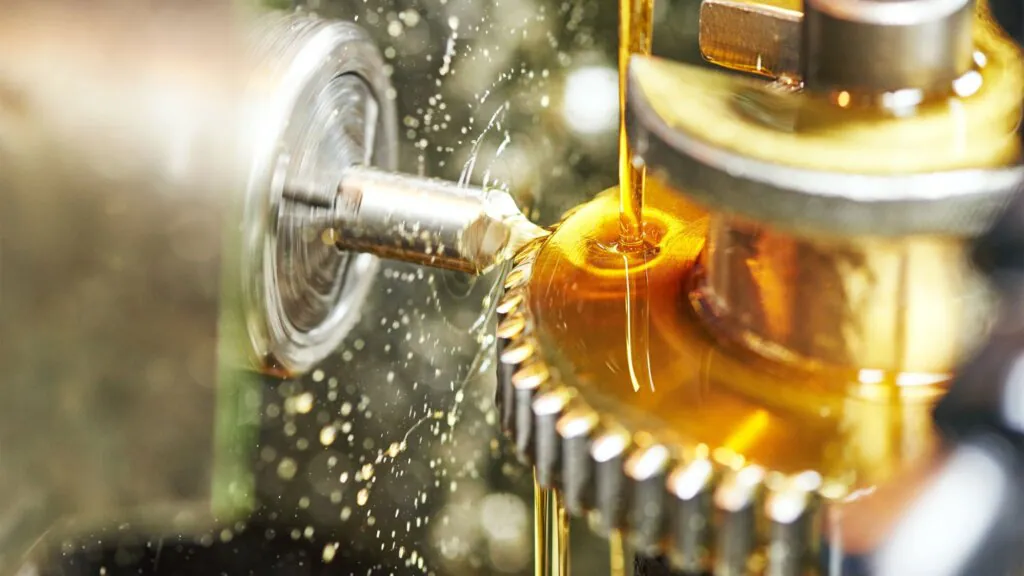
Gear grinding is vital for applications requiring an higher level of precision, like robotics or aerospace. By removing minute flaws, it generates ultra-rich-smooth surface finishes & tolerances down into the micron level. There are two primary kinds:
A Modern High-Speed Method Being a quicker option to shaping, power skiving is growing progressively more and more popular. It preserves very tight tolerances while substantially boosting production while facilitating both internal as well as external gear cutting. In addition, CNC skiving machines enable adaptive control & real-time modification.
Broaching is the process of pushing a multi-toothed tool through the part being worked on in order to cut internal splines. Although broaching is fast and effective for large batches, it is more stiff than CNC-based methods and requires expensive tooling. These CNC steps can be coupled or sequenced based on the geometry, volume, & application-specific tolerances of the gear.
In CNC gear manufacture, heat treatment is an essential procedure that greatly enhances gear performance under friction & stress. Long service life can be guaranteed by hardening the gear surface, especially for high-load applications like industrial gearboxes, automobile drive trains, & aircraft.
Even with fine machining, untreated gears are vulnerable to wear, deformation, & failure when under repetitive loads. By retaining a flexible core & producing a tough outer layer, the surface hardening strikes a balance between shock absorption & wear resistance.
In accordance with the application, hardened gears usually have case depths between 0.5 to 2.0 mm and surface hardness between Rockwell C 58 as well as 64. Although post-machining hardening is employed for dimensional accuracy, pre-machining heat treatment can be used to lower the possibility of distortion.
In order to stabilize the microstructure and increase its long-term durability, stress reduction cycles & cryogenic procedures are frequently incorporated. Gear makers have to weigh cost, cycle time, and reliability when choosing the heat treating procedure.
Surface finishing is essential to improving gear performance, reducing noise, and ensuring good meshing under load after machining & hardening.
Several international standards are employed to measure the caliber of gear:
The following are essential inspection parameters: lead deviation & tooth profile deviation:
In general, high-precision gears satisfy DIN 5 or above, particularly in the fields of robotics, defense, especially high-speed automation. Finishing & inspection work together to make certain that gears fulfill the requirements of design and continue functioning at their best all through time.
The digital underpinning for modern CNC gear production is the combination of both CAD (Computer-Aided Design) with CAM (Computer-Aided Manufacturing). This combination guarantees accuracy, consistency, and shorter product development cycles from modeling to machining.
The significance of CAD in gear design Engineers can create complex gear shapes, simulate stressful circumstances, and assess performance in real-time settings using CAD programs like SolidWorks, CATIA, & Autodesk Inventor. These instruments are perfect for complex or unique gear combinations since they may generate precise 3D models according to common gear characteristics (cycloidal, involute, etc.).
CAD models are converted into G-code, the language that CNC machines are capable of understanding via CAM software like Mastercam, Siemens NX, & Fusion 360. CAM provides efficient and safe gear machining with its advanced capabilities, which include automatic tool path development, collision prevention, and immediate time feed rate optimization.
Digital twins as well as simulation Before production starts, teeth participation, backlash, as well as load behavior can be digitally tested using gear-specific software for simulation such as KISSsoft along with Gleason GEMS. These simulations cut down on lead time and trial-and-error.
Replicating real gear machines in simulated environments is an additional use of digital twin technology. During the gear's lifecycle, this enables continual optimization, energy efficiency tracking, including predictive diagnostics.
Automation has transformed the manufacturing of CNC gears through boosting productivity, reducing human error, & facilitating round-the-clock operations. IoT, AI, and smart robotics have all been integrated into the machinery production ecosystem as a result of the concept of Industry 4.0.
Collaborative robots, or Cobots, help in part handling, tool changes, and loading and unloading gear blanks. They are especially useful in low-volume, high-mix manufacturing settings where flexibility is important. Cobots are ideal for small to large gear workshops since they are cheap and easy to reprogram.
IoT-enabled modern CNC gear-cutting machines enable real-time spindle load, vibration, & thermal deformation monitoring. Systems like this can improve accuracy & prolong tool life by self-adapting parameters in accordance with feedback.
During production, gears are checked using in-line CMMs & vision systems. By guaranteeing that deviations are fixed before the part being finished, this closed-loop management minimizes scrap & rework.
The machining process changes dynamically based on information collected by sensors & inspection systems. In this case, the machine automatically adjusts feed or tool position to correct for any recognized divergence in the tooth profile. Through increasing consistency and reducing the need for specialized labor, smart automation makes CNC gear manufacturing more competitive worldwide while preparing for the future.
In the production of gears, precision is essential, not optional. Deviations as little as microns may result in wear, noise, or disastrous failure. Therefore, during the CNC gear production process, strict quality assurance & inspection criteria are crucial.
It measures gear geometry, particularly pitch diameter, face width, or runout, using high-precision probes. With little modification, 5-axis CMMs allow for intricate geometries including internal gear profiles.
Feature errors, lead mistakes, pitch variations, & surface roughness can all be measured using GMMs that have been developed for gears. Usually, these devices conform to global standards such AGMA 2015.ISBN 3962 and ISO 1328,They offer full analyses on quality standards, ranging from DIN 10 to DIN 5 including AGMA Q7 to Q13, that are essential for high-speed industrial gears, aerospace, including defense.
Ra values (microns) can be determined by roughness testers to make sure gears satisfy surface specifications unique to a given application. Proper heat treatment has been confirmed by Rockwell or Vickers testing for hardness.
CNC gear production still confronts a number of challenges that affect cost, scalability, & uniformity despite technical progress.
Tool wear can be accelerated by harsh gear finishing operations like grinding and skiving, particularly when working with steels that have been hardened. Keeping tool alignment and sharpness is crucial to preventing part rejection and inaccurate profiles.
Gear dimensional deviations brought on by heat treatment may require extra finishing or remedial machining. One of the most significant difficulties is still controlling distortion with stress-relief cycles along with simulation.
Internal gear tooth machining is challenging, particularly for deep or tiny bores. Compared to external machining, techniques like shaping & broaching are slower, more costly, and often call for specialized tools.
The need for skilled CNC programmers & setup engineers is increasing as gear profiles & systems get more complicated. Delays in production or inconsistent quality can result from the skills gap.
To overcome these challenges, constant expenditures in R&D, digital process control, equipment, and training must be made to meet strict tolerances as well as standards.
The need for sustainability, the creation of smart factories, & digital innovation are all influencing the future of CNC gear manufacture. These are a few of the most significant trends.
CNC machines are able to improve toolpaths in real time because of artificial intelligence. This improves surface polish & profile accuracy while lowering cycle time, energy usage, & tool wear.
Machines that mix traditional subtractive (CNC) as well as additive (3D) processes have become more and more popular. They make it possible to produce unique gear profiles rapidly, particularly in the defense, aerospace, along with research and development industries.
The manufacturing of CNC gears has evolved from being an accurate problem to a highly scalable, digitally integrated solution to modern engineering needs. The use of CNC machines is the foundation of an extensive variety of sectors, including robotics, wind energy, automotive, & aerospace, since it can produce intricate gear geometries with tolerances as tiny as microns.
The modern gear manufacturing setting is more intelligent, quicker, including data-driven than ever before, with capabilities like CAD-driven design, AI-optimized machining, plus strict quality assurance. By merging automation, thermal treatment, surface finishing, & digital simulation, gears are certain to not only meet but also exceed performance standards in regard to consistency and durability.
New advances in green technologies, smart analytics, as well as hybrid production hold the opportunity to drastically enhance CNC gear machining by making it faster, more flexible, & sustainable.
Partnering with an innovative CNC gear producer is not only an intelligent decision for OEMs & engineers looking for reliability, speed, & accuracy, but it's also a smart move.
